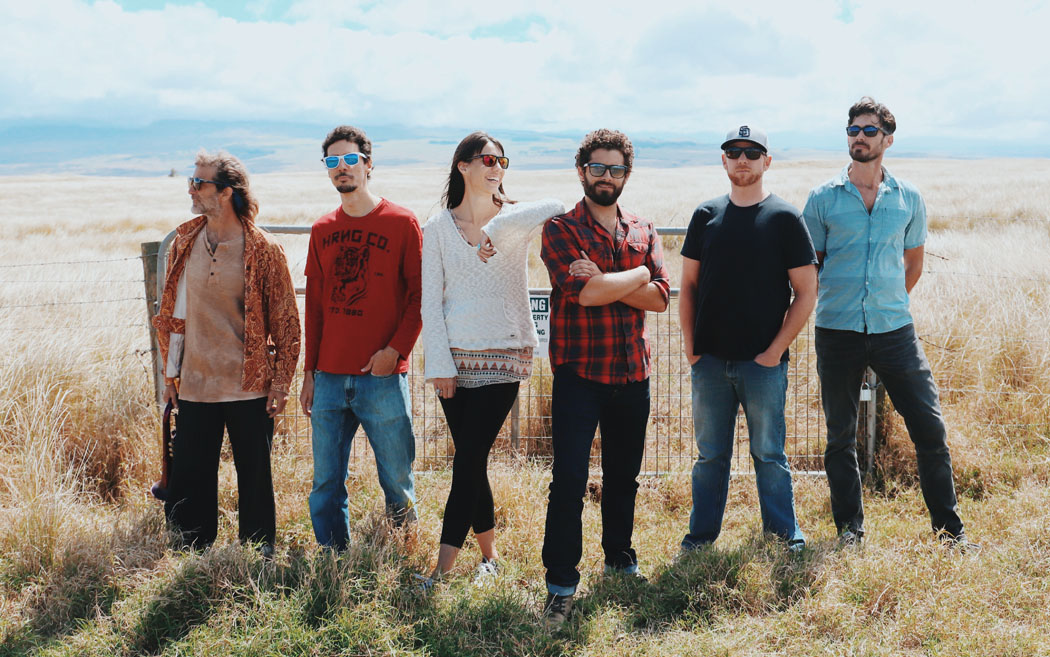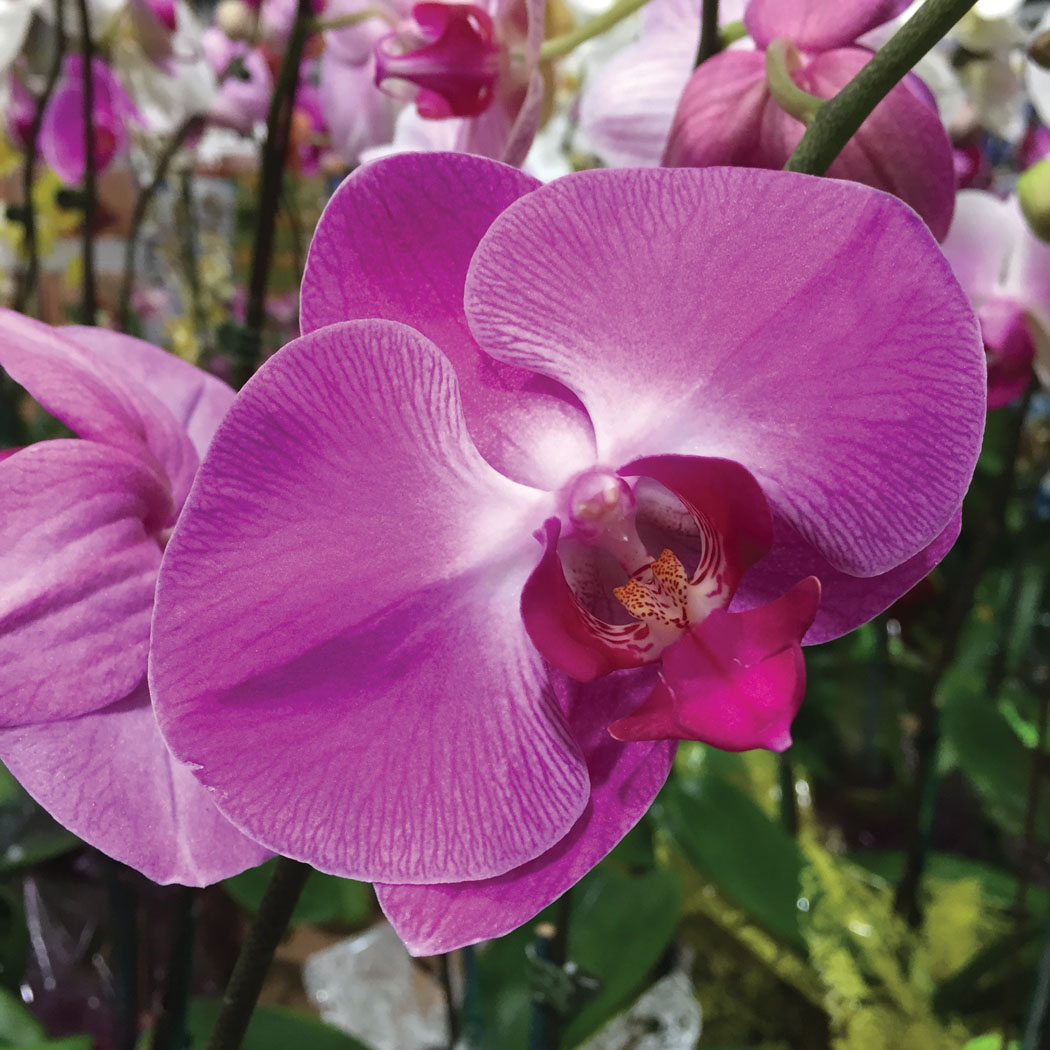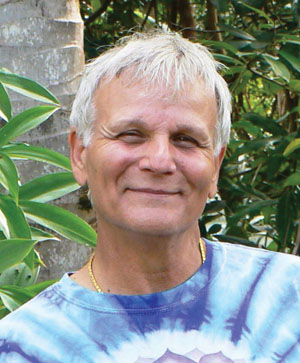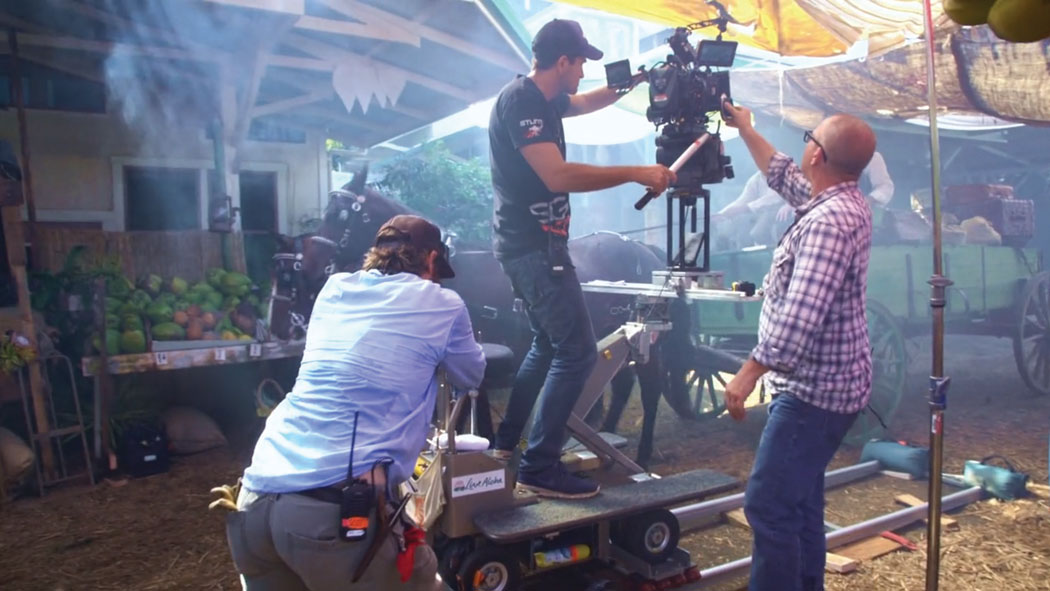
Creative Filmmaking on Hawai’i Island

By Ma’ata Tukuafu
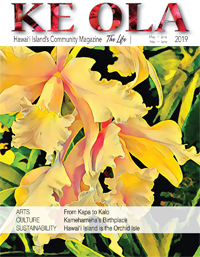
Beautiful and diverse Hawai‘i Island, with its verdant rainforests, black sand beaches, and seasonally white-capped mountains, has been showcased in many films made over the years. From 1918’s The Hidden Pearls to the most current film productions, Avatar (2017) and Wrongfully Accused (2018), Hawai‘i’s varied landscapes play a huge role in film settings.
Justin Finestone, film commissioner for the Hawai‘i Island Film Office says productions are attracted to the island because of the 11 (out of 13) climate zones on one island. With the many distinct landscapes, productions can shoot films that portray Hawai‘i, as well as create stories that represent other locations.
“We are so unique in the islands, and each island has its own feel,” Justin says. “We have the lava fields, and our landscape is so diverse we can do just about anything.”
Film production is mostly a green industry, creating sustainable business that has minimal negative impact for the island; the local economy is boosted by money spent in the community to hire local talent, rent cars and hotel rooms, and use local chefs and restaurants. In addition to film productions, there are television shows, reality shows, commercials, and documentaries shot here. Approximately 120 productions a year come to this island alone and, according to county permitting reports, 2018 produced about $10.6 million in revenue.
It is Justin’s job to market the island to production companies, support them in finding resources, and to do the film permitting for county sites. (The state has its own permitting process if filming on other than county sites.) The county also established a public/private partnership with Honua Studios, a state-of-the-art film studio in Kailua-Kona to fill the growing need for a local film studio.
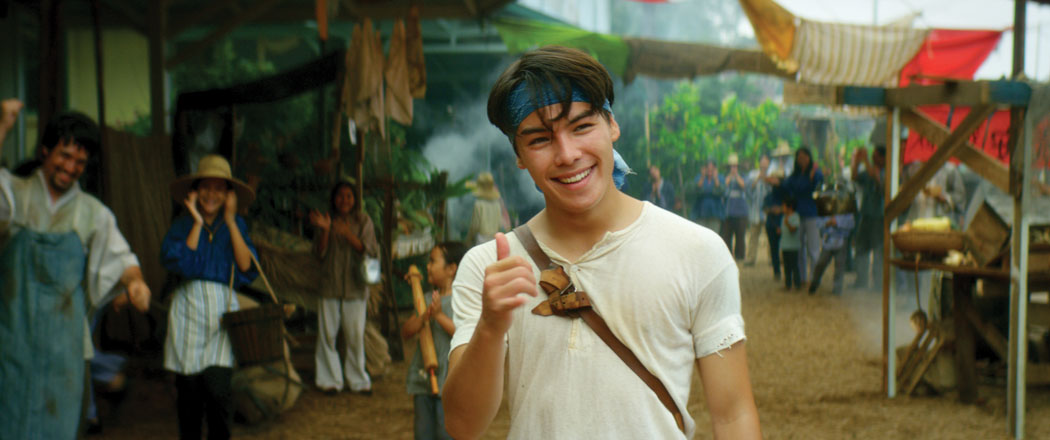
For Avatar, the entire principal cast was flown over to Hawai‘i Island in 2017 because the director wanted them to have some real-world experience before they did the motion captures. To be released in December of 2020, four Avatar movies are being created back to back.
“Most of Avatar is done with motion capture,” says Justin. “This means actors are wearing special suits which capture their motions, and then with computers, it overlays their character on it. The actors were in the ocean snorkeling, they were up in the cloud forests, and they were near waterfalls. This real-world experience allows actors to know how to move when they are back in the studios.”
The last major film here was Jumanji (2016), which was shot at a private waterfall. A bigger budget film (more than a million dollars) called Running for Grace (2016) stars Matt Dillon and was filmed in Hilo, Kona, Wailea (Hāmakua), and Honua Studios. Justin explains that a lot of other smaller films, travel shows, and foreign productions are made here, especially from Japan, and though Hawai‘i Island doesn’t get as many as O‘ahu because of infrastructure, this island is definitely an ideal destination.
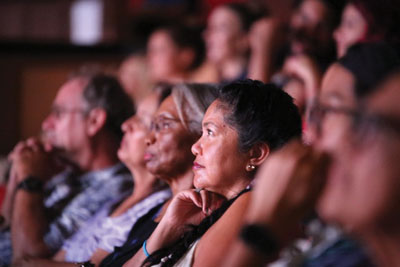
“More people are finding out that we have a unique niche, who want to escape the hustle and bustle of the city,” Justin says. “We have world-class hotels, an experienced crew on island, and we don’t have the traffic congestion. They can get from hotel to set in a reasonable amount of time.”
In the past, filmmaking has had the barrier of being an expensive art form to produce. Now with the advent of digital video technology—and even more recently, the ability to turn a smart phone into a film camera—anyone can make a movie. With so much creativity on the island, (not just in film, but in all of the arts) a lot of local movies and films have been made here.
In 2018, Puna-based filmmakers Zoë Eisenberg and Phillips Payson founded the Made in Hawai‘i Film Festival. Their inaugural event was held in Hilo at the Palace Theatre in August 2018, when 300 people attended the festival despite Hurricane Lane coinciding with the dates.
“Part of Zoë’s and my desire was to see the film scene expand and grow here,” says Phillips. “One of the things we were lacking was support and opportunities to engage with an audience. We created this film festival specifically for Indie content that is shot in Hawai‘i and on Hawai‘i Island.”

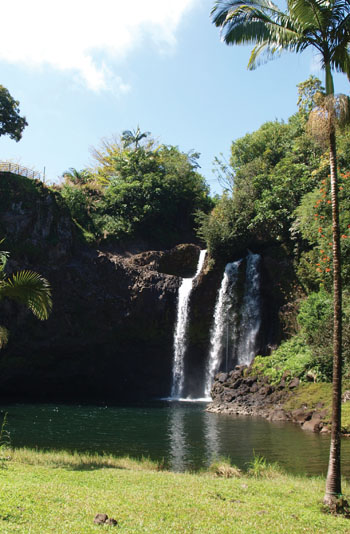
Submissions may include web series, narrative shorts, music videos, features, experimental works, and short form subjects. Their hope is that filmmakers meet each other; connections with crews, actors, and talent pools are made to keep the content growing and improving; and for people to have the opportunity to see and engage with the talent.
Zoë says at least 50 percent of the principal photography must be shot in the islands, and it is a unique festival because they focus on submissions from emerging filmmakers. For many first-timers, it takes a lot of work to make a film, and if no one has heard from them, or they are learning, it can be discouraging if there isn’t a platform to show it.
“We are trying to get ahead of hurricane season this time, so we are holding the festival on June 1 and 2 at the Hilo Palace Theater, and June 14 at Aloha Theatre in Kona,” Zoë says. “Our submission rates are really low, $15–$25 depending on the length of the film, and we will be giving out awards this year.”
Films that Zoë and Phillips have created entirely on this island are Aloha from Lavaland (a documentary about the 2014 lava flowing toward Pāhoa), Throuple (a film Zoë wrote and produced while Phillips directed), and Stoke (a feature Zoë wrote and co-directed with Phillips, to be released online at the end of the summer).
They have to be passionate about what they choose to work on, as a film project can typically take three years from conception to final product. Zoë and Phillips create everything together: working on the story, applying for permits, scouting for locations, and finding crew lodging, transport, and flights. By bringing the film community together at the Made In Hawai‘i Film Festival, they are creating the infrastructure needed to make filmmaking an easier process.
“We’re excited to be a part of the Indie filmmaking scene, to collaborate with each other and show that Hawai‘i has a film voice and is a power house,” says Justin. ❖
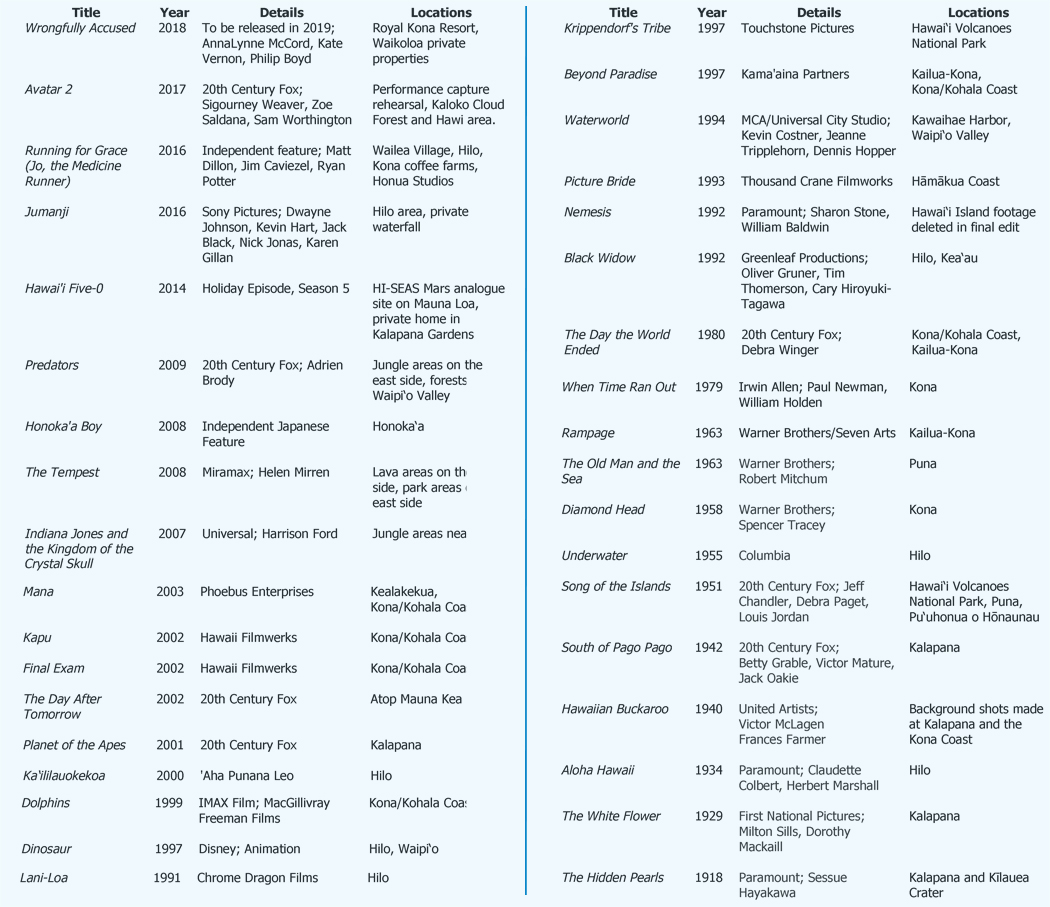
For more information: hawaiiislandfilm.com
Made in Hawai‘i Film Festival: mihff.org
